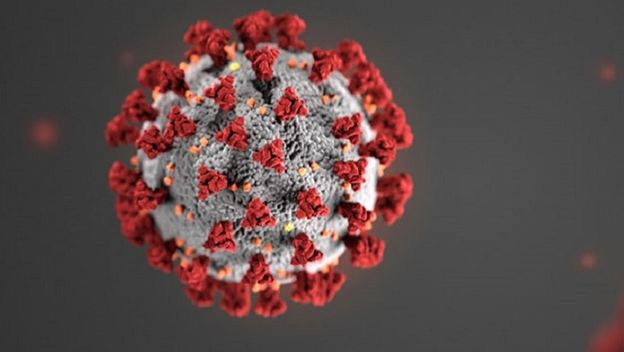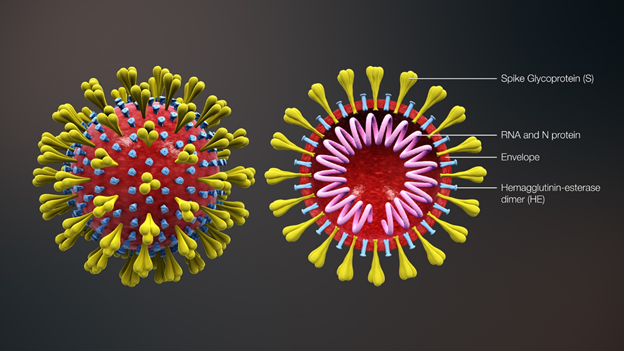COVID-19 Tests: Wondering What Makes the Difference? Tweet Thread by Jen Heemstra (March 28, 2020)
Author: Jen Heemstra @jenheemstra
Heemstra, Jen. “You Might Have Heard about the New Test That Can Detect #COVID19 in 5 Min. And, You've Almost Definitely Heard about the Test That Took Days to Run and That We Don't Have Enough of. Wondering What Makes the Difference? Read on.” Twitter, Twitter, 28 Mar. 2020, twitter.com/jenheemstra/status/1244043096301731845?s=20.
You might have heard about the new test that can detect #COVID19 in 5 min. And, you’ve almost definitely heard about the test that took days to run and that we don’t have enough of. Wondering what makes the difference? Read on.
— Jen Heemstra (@jenheemstra) March 28, 2020
Before we dive into how the tests work, it’s important to know a little bit about how the molecules are arranged in a virus. Coronavirus is made up of a spherical protein coat with all of those spikes attached to it.

If you’re curious, the “protein” is composed of the same building blocks that make up the protein in the foods that you eat, but the sequence in which those building blocks are put together and the shapes that they fold into makes all the difference.
— Jen Heemstra (@jenheemstra) March 28, 2020
Inside that protein sphere is the RNA genome (the pink coil in the image below). This is another polymer and it uses four letters – A, U, C, and G to encode all of the instructions that the virus needs to take over a human cell and turn it into a virus-producing factory.

— Jen Heemstra (@jenheemstra) March 28, 2020
Both the lengthy lab test and the rapid point-of-care test detect the RNA strand that is inside the virus. Every virus has a different sequence of A, U, C, and G that makes it unique. Much like people, viruses in the same family look similar, but are still different.
— Jen Heemstra (@jenheemstra) March 28, 2020
The tests use synthetic pieces of DNA – a polymer similar to RNA – that target the sequences in the viral RNA that make it unique. The DNA probes can only bind and set off a reaction if they perfectly match the viral RNA.
— Jen Heemstra (@jenheemstra) March 28, 2020
Okay, so why is one test fast and one is slow? There are a few differences, but the biggest one is how the RNA is pulled out of the protein coat. It’s kind of like cracking an egg – you need to break open the protein, but without damaging the RNA inside.

— Jen Heemstra (@jenheemstra) March 28, 2020
The lab test does this through a series of steps by adding and removing different chemicals. The point-of-care test does this all inside the instrument. It’s way faster, but it is not entirely clear whether it is better at separating out the RNA without damaging it.
— Jen Heemstra (@jenheemstra) March 28, 2020
This is what we will all have to watch – right now, there are very little publicly available data on what is called “limit of detection” – that’s how many copies of the virus need to be in the sample before it will give a positive result.
— Jen Heemstra (@jenheemstra) March 28, 2020
The lower the limit of detection, the earlier in the infection process the virus can be detected. Maybe the new tests will be as sensitive as the lab test, but even if not, getting results in 5 min will certainly be a huge help as we work to combat the spread of this virus!
— Jen Heemstra (@jenheemstra) March 28, 2020





0 General Document comments
0 Sentence and Paragraph comments
0 Image and Video comments
Paul Allison is a nationally-known educator and EdTech expert… (more)
Paul Allison is a nationally-known educator and EdTech expert… (more)
If the limit of detection is high in the new text, doesn’t this imply that we might have false negatives with this test because even though the virus is present it might not reach the limit of detection for the new tests. This is worrisome, yet Hemmstra’s confidence in the last sentence suggests to me that her concerns about the limit of detection are the concerns of a super careful scientist.
New Conversation
Hide Full Comment
General Document Comments 0

